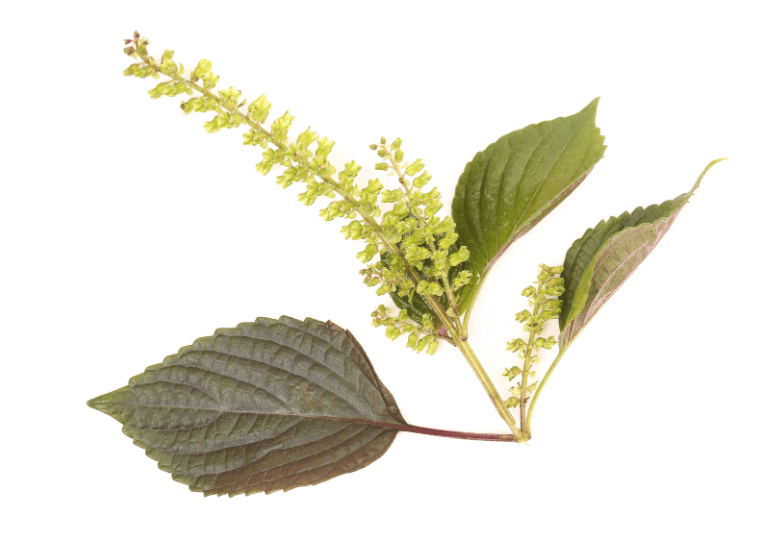
Perilla
Share

Common Name Perilla frutescens,Korean perilla,Chinese basil,Shiso,Wild sesame
Family Name Lamiaceae
Parts Used Leaves,Seeds,Stems,Flowers
Herbal Actions Diaphoretic,Anti-inflammatory, Antioxidant, Antiallergic
Health Benefits Respiratory Health, Digestive Aid, Allergy Relief, Skin Care, Immune Support
What are the Benefits of Perilla?
Vibrant green perilla leaves have been treasured throughout Asia for centuries, especially in Traditional Korean, Japanese, and Chinese medicine, as a potent tonic for enhancing respiratory and digestive health. Energetically, this herb is considered to balance the body's reactions, being warm in nature and pungent in taste. It's a core herb in these traditional medicinal systems, commonly used to alleviate symptoms of allergies and promote overall respiratory wellness.
Rich in polyphenols and omega-3 fatty acids, perilla is highly regarded for its anti-inflammatory and antioxidant capabilities, supporting the body's defense against environmental allergens and internal inflammation.* Known as a "functional food," perilla leaves contain essential nutrients like calcium, iron, and vitamins C and E, making them invaluable not only in herbal remedies but also in everyday culinary applications—from salads and wraps to pickles and condiments.
This versatility and the robust nutritional profile explain why perilla is so widely incorporated beyond traditional medicine, enriching a variety of dishes with both flavor and health benefits, enhancing the diet's overall nutritional value.
Historical Use of Perilla
Perilla has held a significant place in various Asian cultures, particularly in Korea, Japan, and China, where it has been deeply embedded in both culinary and medicinal practices. The plant is believed to house protective energies and has been used in spiritual and health-protecting ceremonies. According to traditional texts and folklore, perilla is considered a symbol of protection against evil and misfortune, often used in rituals to cleanse the home and spirit.
In culinary traditions, perilla leaves are used not only as a flavorful addition to dishes but also as a means of preserving food and health during changes of seasons, particularly in humid climates. Medicinally, it has been noted in texts like "The Compendium of Materia Medica" for its ability to treat a wide range of ailments from colds and flu to complex issues of digestion and allergies.
The use of perilla extends to the decorative arts as well, where its vibrant leaves and seeds are incorporated into household decorations, believed to bring health and good luck. The seeds, rich in oil, are also used in traditional lamps and as a wood polish, bringing a subtle fragrance and preservation quality to wooden furniture and tools. This versatile use of perilla across different aspects of life showcases its integral role in historical Asian societies.
Botanical Description & Habitat
Perilla, also known as perilla frutescens, is an annual plant in the mint family (Lamiaceae), characterized by its square stems and broad leaves. The leaves are often deep green, though some varieties feature red to purple foliage. They are typically slightly hairy, with serrated margins and a slightly coarse texture. Perilla plants commonly grow to a height of about 60 centimeters to 1 meter.
The flowers of perilla are small and appear in late summer to early autumn. They grow in long, raceme-like inflorescences and are usually white to pale purple in color. The seeds of perilla are small, ovate, and form in tiny nutlets typical of the mint family.
Perilla is native to the mountainous regions of Southeast Asia and the Indian subcontinent, thriving naturally in Korea, China, India, and Japan. It prefers temperate climates and is commonly found in gardens, fields, and along roadsides, where it has been cultivated both as a crop and as a decorative plant.
Perilla grows best in well-drained, fertile soil and can thrive in both full sun and partial shade. It is quite robust and can grow in a variety of environmental conditions, although it prefers a relatively moist climate. Due to its adaptability and easy cultivation, perilla has been widely introduced and naturalized in other parts of the world, including North America and Europe, where it is often grown in gardens as an ornamental and culinary herb.
